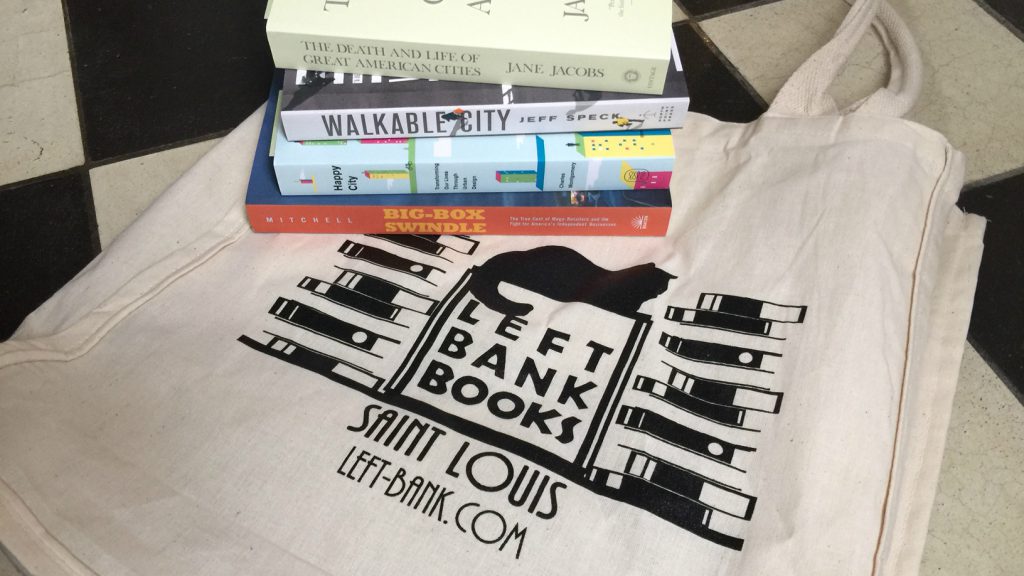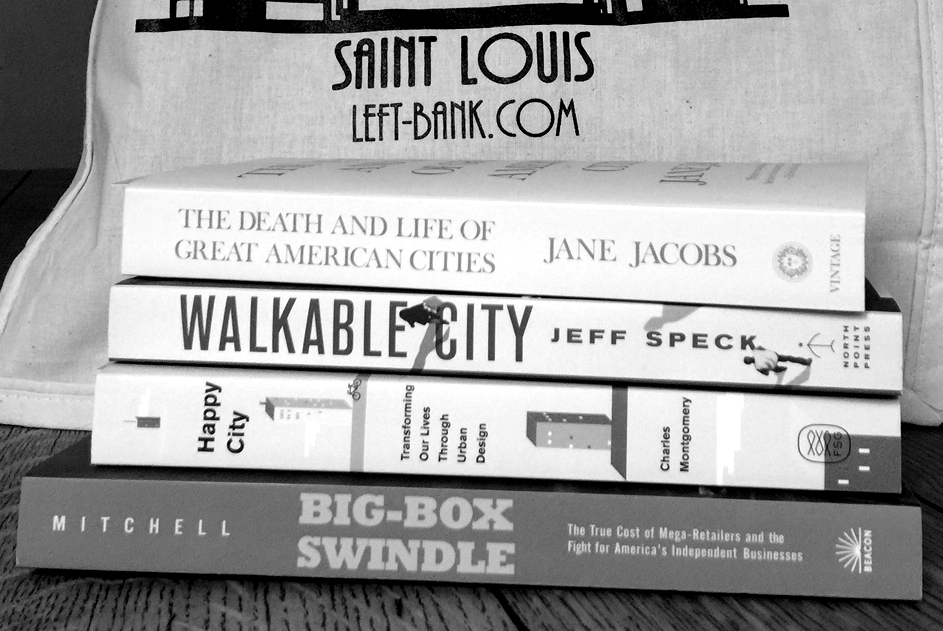July 27, 2016
EQ Magazine
By Kelly Hamilton
Thirty St. Louis innovation leaders, including representatives from St. Louis economic development agencies, elected officials, entrepreneur support organizations, startup companies and multi-national corporations, wrapped a six-day delegation to Ireland and France last weekend. I was fortunate enough to join the delegation. As a storyteller in our city’s innovation ecosystem, what better job could I have than to be on location with this group, sharing St. Louis’ innovation story with the world and taking in learnings from the cities we visited?
First, how did this group come to make this journey together? Well, once upon a time (in fall of 2014), St. Louisan Kevin O’Malley was appointed by President Obama to be US Ambassador to Ireland. He really wanted to get something done for his hometown, beyond his work for United States as a nation. Last summer, to create a space where St. Louis and Irish business leaders could foster deeper connections, he invited a delegation of business and economic development organizations, organized by the World Trade Center St. Louis, to journey across the Atlantic.

One of the most impactful moments of that trip was during a trip to MasterCard’s Dublin office to visit with its global innovation team. Learning about Ireland’s startup ecosystems and how MasterCard engages tech companies there, the delegation was blown away. What doors could be opened for St. Louis’ tech companies in Ireland, and vice versa? With some shared strengths (agriculture, MedTech), what bridges could be built between Ireland and St. Louis? The World Trade Center wanted to help our city find out. So a metaphorical seed was planted on that trip—a follow-up delegation focused specifically on innovation and entrepreneurship. Trade missions like these don’t happen every year, much less in two consecutive years—which already set up this year’s trip to be exceptional.
Finding Family
Trade missions can be somewhat ceremonial. Elected officials are present, there are gifts given on behalf of the cities, there are speeches. Going into this delegation, I didn’t really know what to expect, but I imagined that would be a part of it.
And there was. There were greetings in Gaelic (in Galway) and French (in Lyon). There were gifts given (St. Louis gifted beautiful glass sculptures from Third Degree Glass, founded by Square co-founder and St. Louisan Jim McKelvey). Stories were told (like that of St. Louis Regional Chamber investing in the flight of Charles Lindbergh) to share the spirit of St. Louis with our peers across the sea. There were talking points aplenty, each other thanking the other for the relationship, and us thanking them for their generous hospitality (which was indeed generous; we were never left with a hunger—or a thirst).
But so much more happened. Ultimately, it was about finding our “lost brothers and sisters,” put by Tim Hayden, co-founder and Managing Partner of Stadia Ventures and Director of Entrepreneurship at Saint Louis University. “It doesn’t matter where you’re located; the crazy entrepreneurs all find a way to come together.”

And while that is true, Ambassador O’Malley put it another, more literal way: “Almost 800,000 Missourians claim Irish ancestry of some degree or another. […] We have this shared history, this shared culture. We have a shared DNA. […] We the Irish, we St. Louisans, simply get one another. We can do business because we understand one another. The Irish are a welcoming people. St. Louis is a welcoming place. Ireland presents a tremendous opportunity to St. Louis. I would argue for the Irish that St. Louis presents a tremendous opportunity for you.”
But First, France
Let’s not skip too far ahead. First, after a 20-ish-hour journey, the delegates landed in Lyon, France for the first leg of the delegation. Why Lyon, when the US Ambassador to Ireland invited us? Great question. St. Louis and Lyon are sister cities. If you are unfamiliar with this, the Sister City Initiative is a global project whereby cities create relationships for mutually beneficial business and cultural exchanges.
Lyon is known as a culinary capital, but it also has a whole lot happening in the business space, particularly in the life sciences. There are 600 life science companies in the region and 60,000 jobs in health and biotech. The number-one vaccine production center in the world and France’s leading health center, Lyonbiopôle, are there. It has Biodistrict Lyon, a business district with more than 5,000 people working there, including 2,750 researchers.
Day one had the group visiting the global headquarters of bioMerieux, a pioneer and world leader in the field of in vitro diagnostics. The 50-year-old privately held company has a St. Louis office that employs more than 700 people, a significant portion of its 9,500-person team. We learned about Lyon’s deep history of innovations in the life sciences and bioMerieux’s role as an anchor in the ecosystem and economy.

Later that day, the group got a tour of Lyon by water, where we had a spectacular view of the new Lyon-Confluence district, an innovative project between public and private sectors. An ambitious undertaking, the project’s goal is to double the size of Lyon’s city centre by 2025. The first phase, initiated in 2003, has come to a close, and the results are breathtaking.
According to Jean-Charles Foddis, Executive Director at ADERLY, Lyon’s economic development agency, the district—which is both a business and residential district—is attracting investors and tenants who are seduced by the district’s location between the Saône and Rhône rivers and its proximity to the city center. The location ws selected to host the Lyon Smart Community project until 2016 (Lyon was the first “Smart City” in France).

On day two, my fellow delegates and I participated in discussions hosted by ADERLY and OnlyLyon, an organization focused on building the region’s international reputation. Aside from their Sister City relationship, Lyon and St. Louis share the life sciences sector as a key strength. Back-to-back panel discussions focused on drawing out commonalities, unique challenges and possible collaborations between cities in the bio/life sciences space.
The first panel brought together Jason Hall, VP of Entrepreneurship and Innovation of the St. Louis Regional Chamber and Donn Rubin, President & CEO of BioSTL from St. Louis and Hugues Benoit Cattin, Director of the Innovation Factory at the University of Lyon and Florence Agostino Etchetto, CEO of Lyonbiopôle, to discuss their respective regions’ strengths and challenges.

Jason Hall noted some of St. Louis and Lyon’s connection points. St. Louis is a product/startup of France–founded by French entrepreneurs Laclede and Chouteau–and its entrepreneurship boom largely started with the life sciences, including being home to the researchers at Washington University who first mapped the human genome. Hugues Benoit noted that Lyon looks to send their students to interesting ecosystems like St. Louis.
To get some of the companies’ perspectives, Travis Sheridan of Venture Café – St. Louis moderated a CEO2CEO discussion between Dr. Cheryl Watkins Moore, director of St. Louis startup accelerated rehabilitation specialties and Gilles DeVillers of Lyon-based Neolys Diagnostics. The two CEOs discussed how their cities support life science startups, what current challenges they face and what opportunities lay ahead for their ecosystems.

Destination Dublin
Immediately following the panel discussions, we hopped a plane to Dublin. Day three of the delegation brought us to Deerfield Residence, the home of US Ambassador to Ireland, Kevin O’Malley. Before the day’s meetings, everyone had a chance to acclimate to the stunningly beautiful environs of the Ambassador residence. Breakfast was served and delegates had the chance to mingle with members of Dublin’s tech community and chat with the Ambassador.
Ambassador O’Malley then welcomed the delegation with remarks that spoke to the symbiotic relationship and shared history of the US and Ireland, and to his desire to foster deep connections between St. Louis and Ireland during his time in office.

“I want the best for my hometown. […] I hope we make this a profitable trip—that’s what this is all about. Can we make connections to put St. Louis, Missouri and Ireland together for the future?”
It’s important to note the timing of this delegation, happening just two weeks after the Brexit vote on June 23. The Ambassador made some poignant reminders to the crowd to set the tone for the day:
“With the United Kingdom voting recently to leave the EU, we are reminded again we need to work smarter to find a new and cohesive way to do business. […] It may well be that Ireland is soon the only English speaking country in the EU. It may well happen that the Brexit changes things dramatically and here we are with an opportunity and we’re sitting here on the cusp of this. […] The successful people are the nimble people. We [the United States] have a shared history with Ireland and shared DNA. […] The big question that’s presented to me and I’ll present to you is not what will happen at this meeting, but why are we just now doing this?”
The day’s panel discussions explored Ireland and St. Louis’ common ground in tech and FinTech. The first panel featured Ginger Imster, Executive Director of Arch Grants, and Dennis Lower, CEO of Cortex Innovation Community, alongside two leaders in Dublin’s innovation ecosystem, Eamon Leonard, Founder at Cohort, Inc. and Eoghan Stack, Chief Executive at DCU Ryan Academy. The conversation centered around the strengths and pain points of our respective communities. Dublin noted its collaborative and welcoming culture, similar words often used to describe St. Louis’ ecosystem. Lower and Imster noted St. Louis’ focus on community building, the importance of creating an inclusive environment and the vision of creating a vibrant innovation corridor that gives entrepreneurs greater choice as they scale.

Throughout the discussion, both Imster and Lower spoke to the importance of people and place. One salient statement came during a discussion around failure and its role in a healthy ecosystem. From Imster: “At the end of the day, what have we done as communities to be able to reflect values back at that talent so that, should the business not succeed, we can make a compelling case for that talent to want to stay [in St. Louis]? Because this is about people, and the values that we share.”
Mastering Corporate-Startup Collaborations
On the same day, Chris Dornfeld, Co-founder and President of St. Louis-based Bonfyre, then led a CEO2CEO discussion between Pravina Pindoria, COO and Cofounder of St. Louis-based Tallyfy, Seamus Matthews, CEO & Founder of Dublin-based startup, PennyOwl and Robert Reeg, President, MasterCard Operations & Technologies. The discussions centered around how startups partner with multi-national corporations. With MasterCard’s corporate technology headquarters based in St. Louis and Ireland, the conversation also delved into how MasterCard is leveraging relationships with startups to drive innovation and attract talent.

Dornfeld asked the panelists to speak to the value of global companies like MasterCard partnering with startup companies. Reeg spoke to MasterCard’s approach, and how it has been a more recent shift for the company to focus on building a reputation for innovation. What started as a way to get more ideas turned into a larger talent play.
“We started looking at this from a defensive mechanism [standpoint], afraid that someone was going to come up with an idea that would disintermediate us to a certain extent, but it grew into “we’re never going to think of all the best ideas, and so [there’s an entire team dedicated to finding] startups that make sense to become part of the MasterCard family. For us, it gives us access to idea generation and talent that we wouldn’t see otherwise, and it gives our employee base a whole different view of what success looks like. It’s okay to fail. It’s okay to fail fast and go about it a different way, and that’s what learning from the startups helps us do.”
After the day at Deerfield, the group went to Dogpatch Labs, one of Dublin’s leading co-working spaces for tech startups. The impressive place, which is difficult to compare to something similar in St. Louis, but the closest in size and vibe would be CIC@4240, except it has retail space and a food court on the first floor. After a tour and presentation, the delegation caught a train to Galway.
Capital of Culture & Tech
On our first night in Galway, the delegation was treated to a little local culture at a theater house, followed by dinner at a local pub hosted by the Galway Chamber. Along the way, we learned that Galway was actually in the running to be designated the European Capital of Culture 2020, a competition that would bring the city an estimated €170 million to the winner in terms of funding and tourism. It is also potentially worth several thousand new jobs.
The next day, the group started the morning at a networking event at Galway Technology Centre, aplace that provides serviced office space in a prime location in Galway to meet the needs of companies in the ICT, digital media and other industries. The Galway Chamber and mayor’s office welcomed the delegation to the city, shared some insights into the Galway tech ecosystem and invited St. Louis representatives to do the same. Then, several Galway-based startups including Element Wave, RealSim and Claddagh Jewellers, shared their stories and had booths where St. Louis’ delegation connected with them one-on-one.
Campus Connections
After lunch, the delegation headed to the National University of Ireland Galway, where a roundtable of voices from both St. Louis and Galway discussed the role of universities in ecosystems, how the universities are supporting their respective ecosystems. David Hakanson and Tim Hayden of Saint Louis University and William Powderly and Daniel Berke from Washington University spoke to their university’s focuses in terms of engagement.

“One of the things that we’ve found is that what is changing university culture more rapidly than anything else is our students,” remarked Dr. William Powderly, director of the Institute for Public Health at Washington University in St. Louis. “The students coming in now want their education and want to make a difference. And they don’t want to make a difference when they’re 70. They want to make a difference now. And I think that has really started to get us to thinking, how do we do that?”
But the roundtable was not just a sharing of ideas. Before leaving the table, there was a call to take action. Ideas discussed included creating an exchange program for entrepreneurship students and one for startups themselves.
“We have 125 undergraduate entrepreneurship majors. We’d love to send them here. […] Let’s get some of our students in the startup world to come on over and send some of your students over to us as well,” said panelist Tim Hayden of SLU.
Panelist Chris Motley, CEO & Founder of Better Weekdays, offered an insightful idea: “Don’t forget about the founders and entrepreneurs themselves. I think there’s an incredible amount of learning that can happen on how we can expand internationally, especially for a business like mine–everybody needs a job after college. But for those entrepreneurs here in Ireland who want to get exposure in the US, I think that crossover between students [is important] but extending it to founders may also be tremendously beneficial.”
Solidifying Partnerships
On the final day of the delegation, the group met at PorterShed, a new T-REX-like startup incubator in the emerging Galway City Innovation District. The space will house high potential tech start-up companies and was built through a partnership between the Galway Chamber and AIB.
Maurice O’Gorman of the Galway Chamber and Chairperson for the Galway City Innovation District, welcomed the delegation. Ambassador O’Malley joined for the day of conversations and announcements around AgTech innovation. Following the same format as Dublin and Lyon, we started with a panel discussion with leaders in the innovation ecosystem and discussed possible collaboration points between cities. I had the opportunity to moderate a panel featuring Christine Karslake, VP of Entrepreneurship and Innovation at the St. Louis Economic Development Partnership, Matt Plummer, Principal at the Yield Lab, Charlie Spillane, Head of Plant & Agribiosciences Centre (PABC) at the National University of Ireland Galway and Ivan McPhillips, Galway-Mayo Institute of Technology.

Christine Karslake, in addition to sharing updates on St. Louis’ growing Ag and Plant Science Innovation District, shared takeaways that the delegation had been processing throughout the week together: “One of the things as our delegation jumps on the bus at the end of the day is, we want to make sure this just wasn’t a trip—that we’ve really begun a partnership. And that we really have tangible things we’re able to show from this—ways in which we connect companies, in which we can perhaps plan business competitions together, in which we can really work together.”
It should be noted here that one outcome of last summer’s delegation to Ireland was the expansion of BioSTL’s GlobalSTL program into Ireland this year. Donn Rubin, CEO of BioSTL, was on last year’s delegation and during that trip, built a relationship with Enterprise Ireland. One year later, GlobalSTL is now working deeply in Ireland.
“My colleague Vijay Chauhan is in Ireland this week with Enterprise Ireland and with a colleague from St. Louis University and one of our health care systems. They’re traveling around Ireland and meeting with dozens of companies this week, and we’ll be back in September on an AgTech-focused trip. We’re really delighted to be deeply involved now with Ireland.”
The third and final transatlantic CEO2CEO event was a discussion between Peter Wyse Jackson, President & CEO of Missouri Botanical Garden, Gareth Devenney, Co-Founder & COO of Farmflo and Thad Simons, Managing Director of The Yield Lab, the St. Louis AgTech accelerator.

Simons then made an extra special announcement to close out the delegation—the expansion of The Yield Lab into Galway. “Our plan is to be able to start a program very much like we do in the St. Louis and be able to support not only Irish companies, but companies that can come from anywhere in the world that would [get] value from coming to a program based here [in Galway], probably here in this same space that we’re in right now.”
Part of the reason The Yield Lab expanded into Galway is that Simons noticed a way for St. Louis to add value to our Galway sister city. “It was my first trip to Ireland last year that I saw the ecosystem that existed here, so many people working in IT and innovation, MedTech, and I looked around and thought this is how St. Louis looked to me two to three years ago. The ecosystem is really all here, your support and effort, but there is nothing focused with regard to agriculture. [A strong] industry for both Ireland and Missouri is agriculture, so we thought the model developed in St. Louis could work here in Galway.” Simons thanked Enterprise Ireland for its partnership in making the expansion happen, and announced that it had secured its first Irish investor the day before.
Joe Reagan, CEO of the St. Louis Regional Chamber, who made an investment into The Yield Lab toward this expansion, said: “Our connection with Yield Lab Galway will build a bridge here [in Galway] for our homebased fund that will increase trade markets for St. Louis startups. Irish startups coming into the fund looking for a US footprint will see St. Louis’ advantages firsthand.”
Closing out the delegation, Ambassador O’Malley spoke to the sister cities taking action: “The question for me is not will there be success from this if we want to. As I mentioned the other day, [my question is], why didn’t we do this earlier? This is the beginning of something that can be very important for all of us, economically and culturally, to enhance the cities we love.”

Speaking of culture, within five minutes of closing our delegation, it was announced that Galway was chosen as the winner of the European Capital of Culture. The delegation got to celebrate the success of our sisters and brothers in Galway, a perfect ending to the week.
What did other delegates take away from it?
Chris Dornfeld, President and Cofounder of Bonfyre, said: “My goals for the trip were to meet some interesting people, see some great architecture and generate some new business for Bonfyre. By every measure the trip exceeded expectations and it proved to be one of the most memorable weeks of my life. I was surprised by the economic potential for our region to serve as a gateway for european companies wanting to enter the US market, and the breadth of new friendships created with many of the other delegates from St. Louis.”
One of his key takeaways was that we as a region could do a better job of sharing the St. Louis innovation story both internally and with “other cities around the globe as we have a more vibrant innovation and entrepreneurial ecosystem than most people know.”
Ginger Imster, Executive Director of Arch Grants, said: “I knew it would be a well curated trip because of the organizers, but I was overwhelmed by the warmth of our reception in Ireland. Ambassador O’Malley set the tone, and his hospitality, and that of his team, was truly overwhelming.In addition, our counterparts in Ireland were more forthcoming and enthusiastic about partnership than I had anticipated. That excitement meant my conversations were more productive from the very start because my Irish counterparts were already thinking collaboration and coordination.”
Imster spoke to Ireland’s long history of emigration and the fact that talent retention is as big a priority there as it is here. “As a result, our respective markets have a common goal. That said, multiple entrepreneur support organizations in Ireland know that their Irish startups want a presence in North America. Based on my conversations with my peers in Ireland, St. Louis could be the entry point and Arch Grants could be an effective partner in helping those companies create a North American presence in St. Louis. At the same time, we have companies in our portfolio that want to enter the European market. BREXIT means that Ireland is the last English speaking country in the EU. As a result, Ireland is a natural point of entry for our startups that want a dual presence in St. Louis and Europe. I have just begun conversations to explore how Arch Grants can partner with some of our host organizations in Ireland, and I’m hopeful our discussions ultimately result in some companies choosing to locate in both of our markets to the mutual benefit of St. Louis and Ireland. BioSTL is also working to assist Irish companies establish a North American presence in St. Louis, and we look forward to collaborating with BioSTL as circumstances allow.”
Who were the 30 delegates? See the list here.
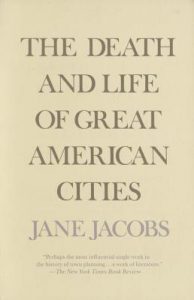 Death and Life of Great American Cities by Jane Jacobs
Death and Life of Great American Cities by Jane Jacobs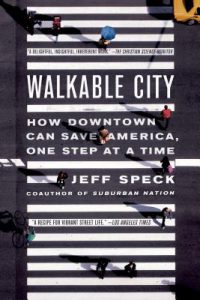 Walkable City: How Downtown Can Save America, One Step at a Time by Jeff Speck
Walkable City: How Downtown Can Save America, One Step at a Time by Jeff Speck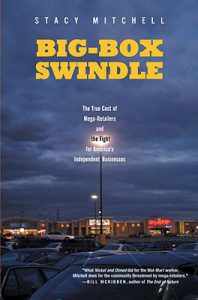 Big-Box Swindle: The True Cost of Mega-Retailers and the Fight for America’s Independent Businesses by Stacy Mitchell
Big-Box Swindle: The True Cost of Mega-Retailers and the Fight for America’s Independent Businesses by Stacy Mitchell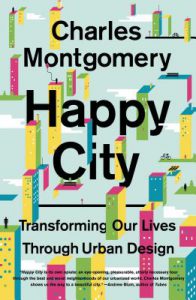 Happy City: Transforming Our Lives Through Urban Design by Charles Montgomery
Happy City: Transforming Our Lives Through Urban Design by Charles Montgomery
